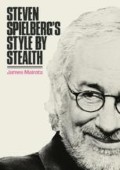Abstract
Before determining the ways Spielberg customises style, it is important to first acknowledge some of the main stylistic devices that function under the umbrella of the classical continuity system. Among these, Spielberg rigorously observes the conventions of the shot, reverse shot arrangement, subjective and point-of-view shot construction, and the multiple angle coverage of space. Yet I argue these are the very elements of the continuity system that he also uniquely modifies and that form the foundation of the wide reverse. This chapter examines these fundamental aspects of classical style within the context of conventional usage. Understanding how these devices operate conventionally will assist in comprehending the points of difference that make up the innovative aspects of Spielberg’s style, which are examined in the following chapters.
Access this chapter
Tax calculation will be finalised at checkout
Purchases are for personal use only
Notes
References
Bordwell, D. (1985). Narration and the Fiction Film. London: Routledge.
Bordwell, D. (1996). Convention, Construction and Cinematic Vision. In D. Bordwell & N. Carroll (Eds.), Post-Theory: Reconstructing Film Studies (pp. 87–107). Wisconsin: The University of Wisconsin Press.
Bordwell, D. (2001). Eisenstein, Socialist Realism, and the Charms of Mizanstsena. In A. Lavalley & B. P. Scherr (Eds.), Eisenstein at 100: A Reconsideration (pp. 13–37). New Jersey: Rutgers University Press.
Bordwell, D. (2006). The Way Hollywood Tells It: Story and Style in Modern Movies. Los Angeles: University of California Press.
Bordwell, D. (2008). The Poetics of Cinema. London: Routledge.
Bordwell, D. (2013). Christopher Nolan: A Labyrinth of Linkages [eBook]. Madison, Wisconsin: Irvington Way Institute Press.
Bordwell, D., & Thompson, K. (1985). Towards a Scientific Film History? Quarterly Review of Film Studies, 10(3), 224–237. Retrieved from Taylor & Francis Media, Cultural & Communication Studies Online Archive.
Bordwell, D., Staiger, J., & Thompson, K. (1985). The Classical Hollywood Cinema: Film Style and Mode of Production to 1960. New York: Routledge and Kegan Paul.
Bouzereau, L. (Writer, Director & Producer). (1997). Saboteur, A Closer Look [DVD Supplement in A. Hitchcock (Director), Saboteur]. Australia: Universal Pictures.
Bouzereau, L. (Writer, Director & Producer). (2001). Steven Spielberg and the Small Screen [DVD supplement in S. Spielberg (Director), Duel]. Australia: Universal Pictures.
Branigan, E. (1984). Point of View in the Cinema. Berlin: Mouton Publishers.
Branigan, E. (1992). Narrative Comprehension and Film. London and New York: Routledge.
Burch, N. (1973). Theory of Film Practice. London: Secker & Warburg.
Holben, J. (2002). Criminal Intent. American Cinematographer, 83(7), 34–45.
Katz, S. D. (1991). Film Directing: Shot By Shot. Visualizing from Concept to Screen. Michigan: Michael Wiese Productions.
Poster, S. (1978). The Mind Behind ‘Close Encounters of the Third Kind’. American Cinematographer, 59(2), 152–203.
Roston, T. (2013, March 9). The Master Mentor. The Sydney Morning Herald.
Salt, B. (1992). Film Style and Technology: History and Analysis. London: Starword.
Salt, B. (2006). Moving Into Pictures. London: Starword.
Spielberg, S. (1981). Of Narrow Misses and Close Calls. American Cinematographer, 62(11), 1100–1103.
Thompson, K. (1986). The Concept of Cinematic Excess. In P. Rosen (Ed.), Narrative, Apparatus, Ideology: A Film Theory Reader (pp. 130–142). New York: Columbia University Press.
Thomson, P. (2012). Animal Instincts. American Cinematographer, 93(1), 48–61.
Windolf, J. (2008). Keys to the Kingdom. Vanity Fair. Retrieved from http://www.vanityfair.com/culture/features/2008/02/spielberg_qanda200802?currentPage=1
Film Title Editions
Curtiz, M. (Director). (1939). The Private Lives of Elizabeth and Essex [Motion picture, DVD (2005)]. Australia: Warner Brothers Entertainment.
Spielberg, S. (Director). (1971). Columbo: Murder by the Book [Television broadcast, DVD (2004)]. Australia: Universal Pictures.
Spielberg, S. (Director). (1987). Empire of the Sun [Motion picture, Blu-ray (2013)]. Australia: Warner Bros. Entertainment.
Spielberg, S. (Director). (1993). Jurassic Park [Motion picture, Blu-ray (2014)]. Australia: Universal Sony Pictures Home Entertainment.
Spielberg, S. (Director). (1997). Amistad [Motion picture, Blu-ray (2014)]. Australia: Paramount Pictures.
Spielberg, S. (Director). (2005). Munich [Motion picture, DVD (2006)]. Australia: Universal Pictures.
Spielberg, S. (Director). (2008). Indiana Jones and the Kingdom of the Crystal Skull [Motion picture, Blu-ray (2012)]. Australia: Lucasfilm Ltd.
Spielberg, S. (Director). (2015). Bridge of Spies [Motion picture, Blu-ray (2016)] Australia: Twentieth Century Fox Home Entertainment.
Wyler, W. (Director). (1951). Detective Story [Motion picture, DVD]. Australia: Payless Entertainment.
Author information
Authors and Affiliations
Rights and permissions
Copyright information
© 2018 The Author(s)
About this chapter
Cite this chapter
Mairata, J. (2018). Continuity Editing as System. In: Steven Spielberg's Style by Stealth. Palgrave Macmillan, Cham. https://doi.org/10.1007/978-3-319-69081-0_4
Download citation
DOI: https://doi.org/10.1007/978-3-319-69081-0_4
Published:
Publisher Name: Palgrave Macmillan, Cham
Print ISBN: 978-3-319-69080-3
Online ISBN: 978-3-319-69081-0
eBook Packages: Literature, Cultural and Media StudiesLiterature, Cultural and Media Studies (R0)

